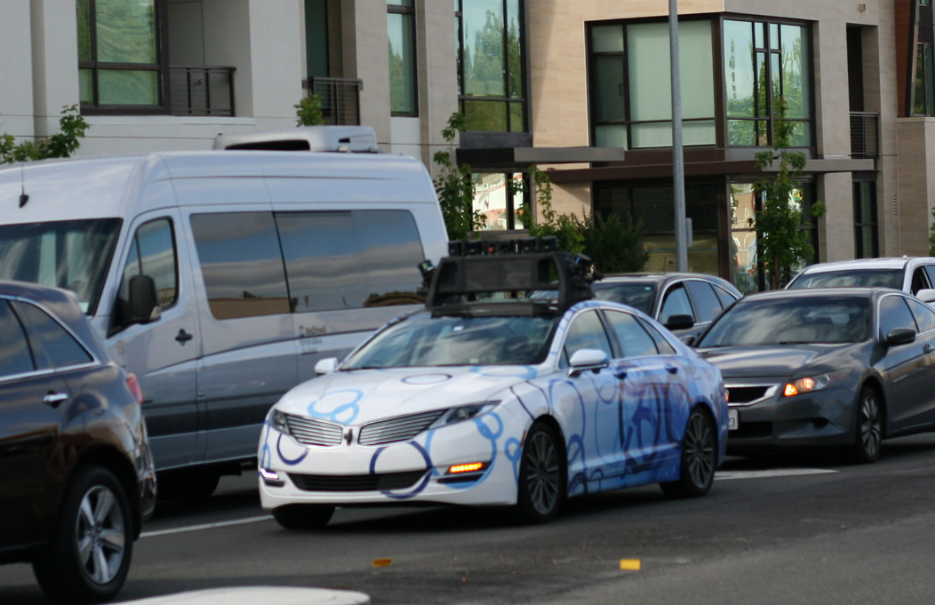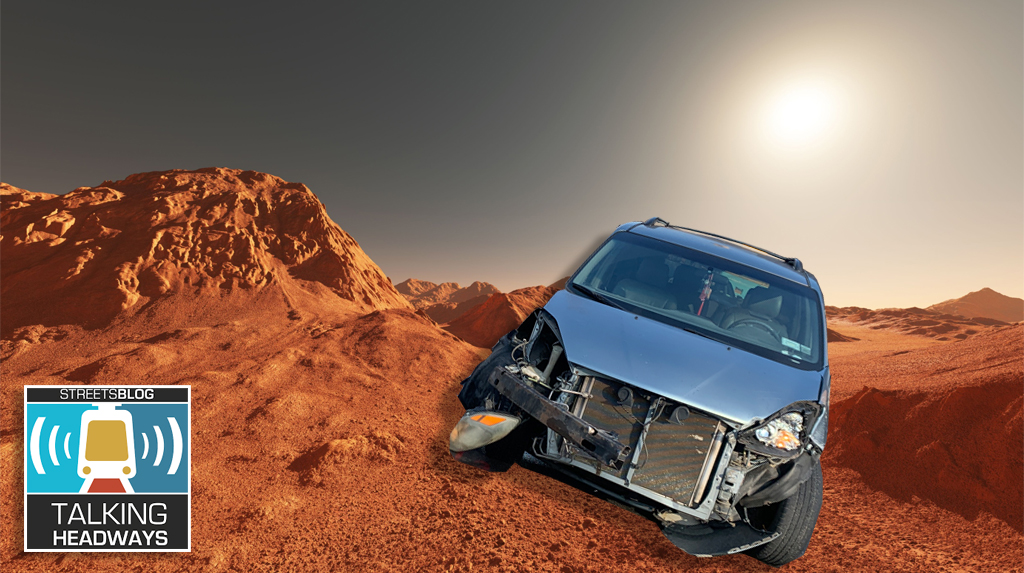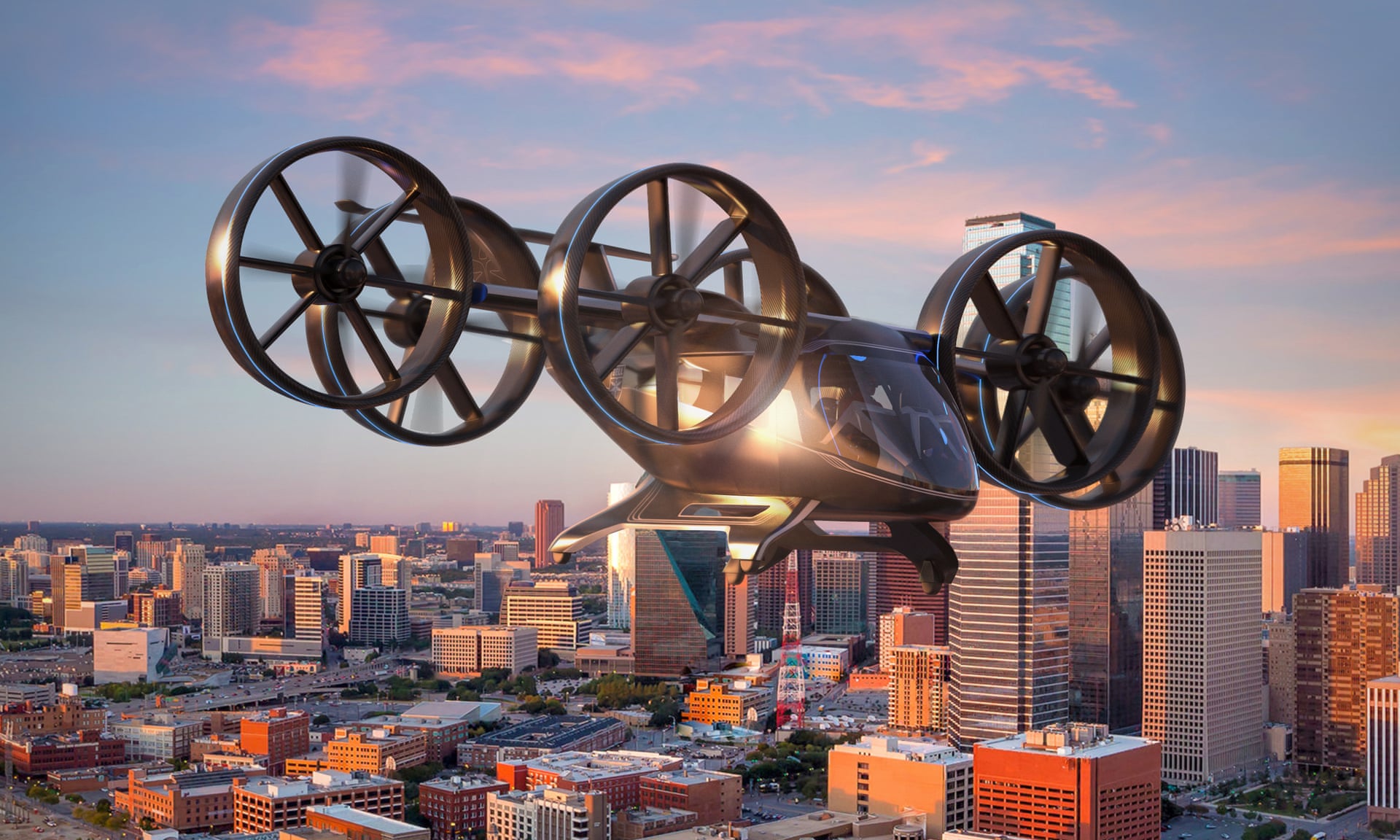A segment that aired yesterday on NPR's Morning Edition comes off as posing a reasonable solution to the technical challenges of making self-driving cars safe around cyclists. But beneath the techno-optimism, there's a dystopian vision in which being wired up is the only way for people walking or biking to avoid traffic dangers on the street.
The story begins innocently enough. Reporter Margaret J. Krauss, from WESA in Pittsburgh, talks with an autonomous vehicle researcher from Waymo about how the technology detects cyclists. She also learns from local bike advocates that many riders feel more comfortable around self-driving cars, because they aren't subject to road rage.
But things take a turn when Krauss interviews Anthony Rowe, an associate engineering professor at Carnegie Mellon University, who showed her a bike "loaded with gear" to send information to nearby autonomous vehicles:
"What we're trying to do is put as much instrumentation on a bike as we can to see if we can predict how it's going to move in the future, so that it could, for example, signal a collision warning system on a car," he says...
"I would not be happy if I had to ride this every day," says Rowe, hopping off the bike. "But hopefully when all of this stuff just gets embedded in a cellphone on the front, then it should be no problem."
Krauss then concludes her piece: "Rowe thinks self-driving cars will make the future a lot safer for cyclists and pedestrians," she says. "But while humans remain the primary pilots, he thinks a little help from bikes could compensate for their weaknesses."
Oh, dear. Where to begin?
The interest in attaching sensors to cyclists stems from the inability of current automated vehicle technology to safely interact with bike riders, who take up less space and move less predictably than people driving cars. One AV algorithm, for example, can spot just 74 percent of cyclists and determine the orientation of just 59 percent, far below the rates for cars and trucks, reports IEEE Spectrum.
Wiring up bikes and pedestrians makes sense in a testing environment, when self-driving car technology is being refined. But at no point after they're operational on public streets should they require sensors on people walking or biking. A basic principle should be that AVs have to get by with their own sensors.
Designing a future in which people outside of cars can only expect to be safe on the street if they launch an app or have a high-tech bicycle is a recipe for disaster.
You think victim-blaming is bad now? Making everyone walk or bike with a "don't hit me" device would further penalize the most vulnerable. Old? Poor? Lost your phone? It's your own fault for walking into the crosshairs of robot cars.
Other reporters have explored the pitfalls of bike- and pedestrian-mounted detection devices. Last month in the Guardian, Laura Laker spoke with academics and experts about how such initiatives put cars before people. "Cities have some urgent questions to answer," she wrote. "Failure to address the issues raised could see us sleepwalking back into the problems of the 1960s and 70s, where cities became thoroughfares for traffic first... and places for people second."
Bike advocates have also raised concerns about sensor-mania. "Should we be forcing cyclists and pedestrians to be equipped with detection devices when they should be prioritised in urban areas?" the European Cyclists' Federation asks in a policy paper on autonomous vehicles. "Should we also equip children walking to school? Do we want to live in urban areas where we have to remember keys, wallet, phone and protective [Connected Intelligent Transport Systems] device to stop cars running into us?"
"Of course, this sort of debate brings us back to the fact that we know how to make cyclists and pedestrians safe in urban areas: reduce speed, shifting cars away, and separate infrastructure," ECF says. "Why over-engineer the solution to a known problem?"






